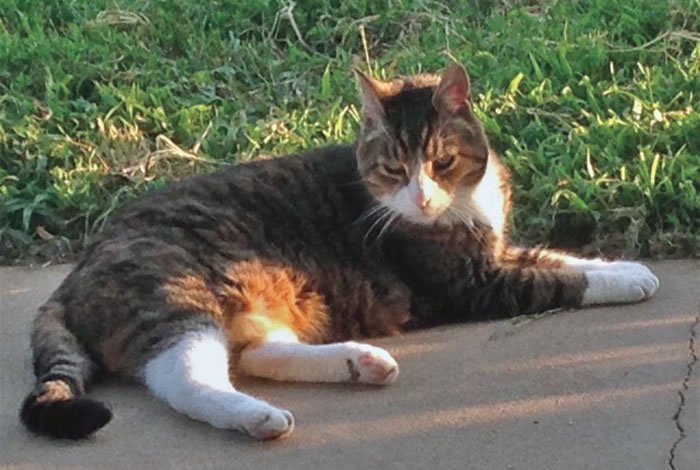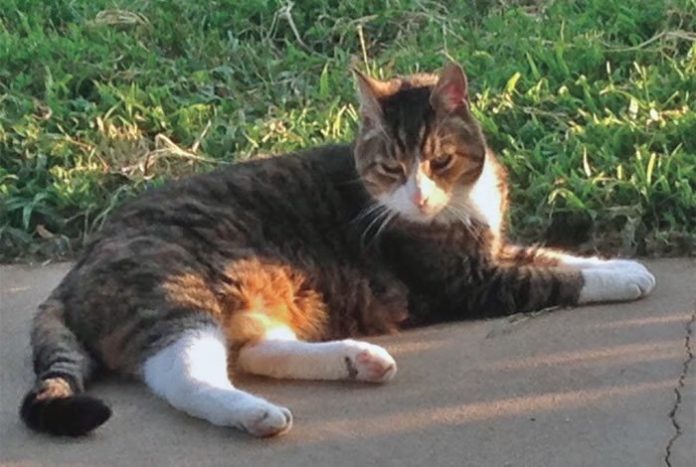
Q. My 17-year-old neutered cat was recently diagnosed with diabetes, and I am concerned about whether I can provide the care that he needs to stay healthy. Can you provide any tips for a novice to help keep him healthy?
A. Thanks for getting in touch, and I understand your concern regarding your cat, but the most important thing I can tell you is that you can do it!
While treating a cat with diabetes requires adjustments, usually, with appropriate support, owners can give affected cats years of high-quality life with minimal stress. Perhaps a discussion of the main points to consider in treating this common disease would be helpful:
Diabetes mellitus affects between 0.2 and 1 percent of the feline population. Most cats have a type of diabetes that mimics that seen in people with type 2 diabetes. This condition is characterized by decreased insulin production by the pancreas and/or resistance to insulin that is produced.
Insulin is an important hormone, as it allows glucose to enter the body’s cells, where it can be used as fuel. If enough insulin is not produced or the cells’ response to it is blunted, cells can be starved of energy. High levels of glucose then remain in the bloodstream, where it can cause problems, including inappropriate loss of fluid by the kidneys, neurologic problems, potentially life-threatening electrolyte and pH abnormalities in the blood, and cataracts, among others.
The foundation of diabetes mellitus treatment in cats is the administration of insulin by injection. This sounds intimidating to many owners who first encounter this prospect, but giving insulin injections to most cats is not something to fear.
With the tiny volumes of insulin that are administered and the small needles that are used to inject it, most cats do not even notice that an injection is being given once they adjust to the situation. Veterinarians and their technical staff are well trained to educate owners about how to give insulin injections to their cats safely and conveniently.
The primary goals of treatment are to maintain blood glucose levels within a safe range (not too high, and, in particular, not too low, which can be dangerous) and to minimize the symptoms of diabetes, which include increased appetite, increased thirst and urination, dehydration, and weight loss.
These goals are achieved by adjusting the dose and frequency of administration of insulin in close collaboration with a veterinarian, by modifying the diet, both with respect to its composition (i.e. carbohydrate restriction is beneficial) and frequency/timing of feeding, and by making sure that plenty of fresh water is available at all times.
Recognizing when a cat’s blood glucose may be too low (because of too high an insulin dose and/or a need for food intake) is an important aspect of caring for a diabetic cat.
Your veterinarians will teach you to be aware of the signs (such as lethargy, restlessness, weakness, staggering, twitching) and what to do if you see them in your cat (feed him, rub honey on his gums, get him to the veterinarian, and adjust dosages).
Generally, the initiation of insulin therapy requires the most intensive effort. Once the appropriate insulin dose and management plan have been established by your veterinarian, though, these efforts usually become much less time-consuming and stressful, and regular intermittent checkups with a veterinarian are sufficient to maintain good glycemic control and health. Of course, a veterinarian should be contacted promptly if an owner ever has any questions or concerns about their cat’s health status.
The take-home message is: YOU CAN DO THIS and, with the support of your veterinary professionals, you and your baby can look forward to many happy times together in the future.
All my best,
Elizabeth




